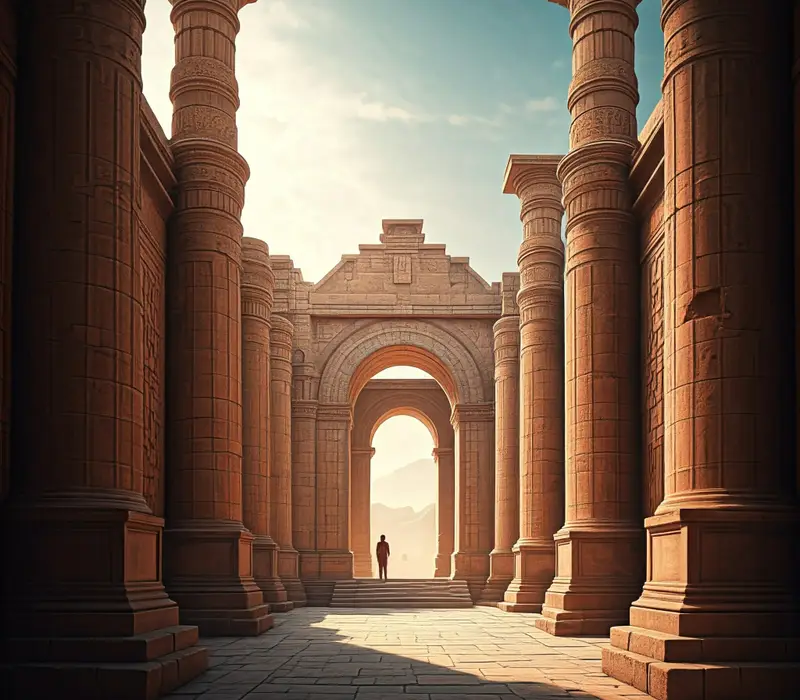Unearthing the Ancient City of Uma: A Journey Through Sumerian Civilization

The Ancient City of Uma
The ancient city of Uma stands as a testament to the grandeur of the Sumerian civilization, one of the earliest in Mesopotamia. Known for its rich cultural heritage, this city is deeply rooted in the history of Iraq and serves as a valuable window into the lives, worship practices, and politics of the Sumerian era. Uma reached its peak around 2275 BCE under the powerful rule of King Lugalzagesi, who united the Sumerian cities and created what is often regarded as the first empire in Mesopotamia.
Today, Uma is known as Tel Jouja, an archaeological site located in Dhi Qar province, roughly 300 kilometers south of Iraq’s capital, Baghdad. For those interested in ancient civilizations, visiting Uma provides a rare opportunity to connect with the past and explore the origins of organized cities and complex societies in Mesopotamia.
Geographic Location and Importance of Uma
Situated in Dhi Qar, Uma lies in southern Iraq, a region renowned for its abundance of archaeological sites dating back to the Sumerian period. Tel Jouja, as it is called today, stands as a pivotal historical site that reflects the evolution of early Mesopotamian culture. Positioned roughly 300 kilometers from Baghdad, Uma was one of the key cities that flourished due to its strategic location near the Tigris and Euphrates rivers, which allowed for agriculture and trade.
The fertile lands of this area contributed to Uma’s growth and prosperity, fostering a community that thrived through agriculture, craftsmanship, and religious practices. It was in Uma that the Sumerians worshipped the goddess Inanna, whom they associated with love, beauty, and war, reflecting the cultural and spiritual significance the city held within the Sumerian civilization.
Religious Significance and the Temple of Shara
The Sumerians were highly devoted to their deities, and Uma was particularly known for its worship of Inanna. In addition to this, Uma housed the Temple of Shara, a sacred space dedicated to local worship and religious rituals. The Temple of Shara served as a place of reverence and offered insight into the Sumerian religious structure, which revolved around appeasing gods and ensuring their favor.
The city’s religious practices not only underscore the importance of spirituality in daily life but also highlight how Sumerians interwove religion with governance. Temples like Shara played a central role, often acting as centers of power that influenced both the social and political landscapes of the era.
Uma’s Golden Era Under King Lugalzagesi
Around 2275 BCE, Uma reached its pinnacle during the reign of King Lugalzagesi, a ruler whose vision went beyond the walls of his city. He expanded Uma’s influence over southern Sumerian cities, establishing the first recognized empire in Mesopotamian history. Lugalzagesi’s ambition led to the unification of several cities under his rule, marking a shift in power dynamics and cementing Uma’s status as a central force in the region.
Through successful conquests and alliances, Lugalzagesi brought cities such as Lagash and Ur under his command. His vision for a united Sumerian empire demonstrated a sophisticated understanding of leadership and organization, ultimately establishing a precedent for future rulers and empires in Mesopotamian history.
Key Achievements of Lugalzagesi:
Unification of Sumerian Cities: Lugalzagesi was the first to consolidate southern Sumerian cities into a single empire.
Administrative Reforms: He implemented governance structures that facilitated the administration of multiple cities.
Cultural Integration: Under his rule, cultural and religious practices were shared across the empire, fostering unity among diverse Sumerian populations.
Lugalzagesi’s empire, however, was short-lived, as he was later overthrown by Sargon of Akkad. Despite this, his influence remained significant, illustrating the depth of Uma’s historical importance.
Discovery of Uma by Western Archaeologists
The ruins of Uma first drew the attention of Western scholars toward the end of the 19th century. British archaeologists William Loftus and John Punnett Peters conducted initial excavations at Tel Jouja, uncovering artifacts that indicated the site’s connections to the Sumerian dynasty. Their work offered a glimpse into Uma’s past and paved the way for further archaeological pursuits.
In the early 20th century, advances in archaeological methods led Japanese universities and research institutes to focus on Uma. Utilizing satellite imaging technology, these teams were able to conduct extensive surveys of Tel Jouja, uncovering new structures and features that added to the understanding of Uma’s layout and development over time.
Uma's Archaeological Wonders: Artifacts and Structures
The artifacts and structures uncovered in Uma provide a wealth of knowledge about Sumerian civilization. Thanks to dedicated excavation efforts, archaeologists have discovered remnants of a royal palace, a temple, residential neighborhoods, and burial sites, all of which offer insight into the social hierarchy and daily life of Uma’s inhabitants.
Notable Discoveries in Uma:
Royal Palace: A grand structure believed to house the ruling family, showcasing the architectural prowess of the Sumerians.
Temple of Shara: An important religious site where rituals were conducted to honor the gods.
Residential Quarters: These areas reveal the social fabric of Uma, depicting how commoners and elites lived in close proximity.
Burial Sites: These contain artifacts and personal items that indicate burial practices and beliefs regarding the afterlife.
Each structure provides a glimpse into the Sumerians’ complex understanding of architecture, community planning, and religious life. These discoveries reflect Uma’s role not only as a center of governance but also as a hub of cultural and religious activity.
The ancient city of Uma holds a unique place in Sumerian and Mesopotamian history. Its strategic location, religious significance, and legacy under King Lugalzagesi underscore its importance in shaping the early structure of civilization in the region. As an archaeological site, Uma provides travelers and historians alike with a valuable portal into the past, offering lessons on governance, spirituality, and the resilience of ancient cultures. Visitors to Iraq can experience the remains of Uma firsthand, gaining insight into the remarkable achievements of the Sumerians and the enduring legacy of one of Mesopotamia’s earliest cities.